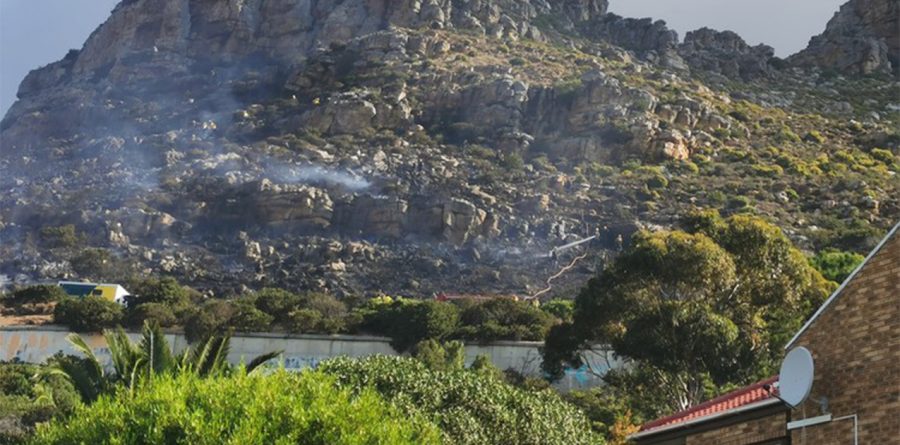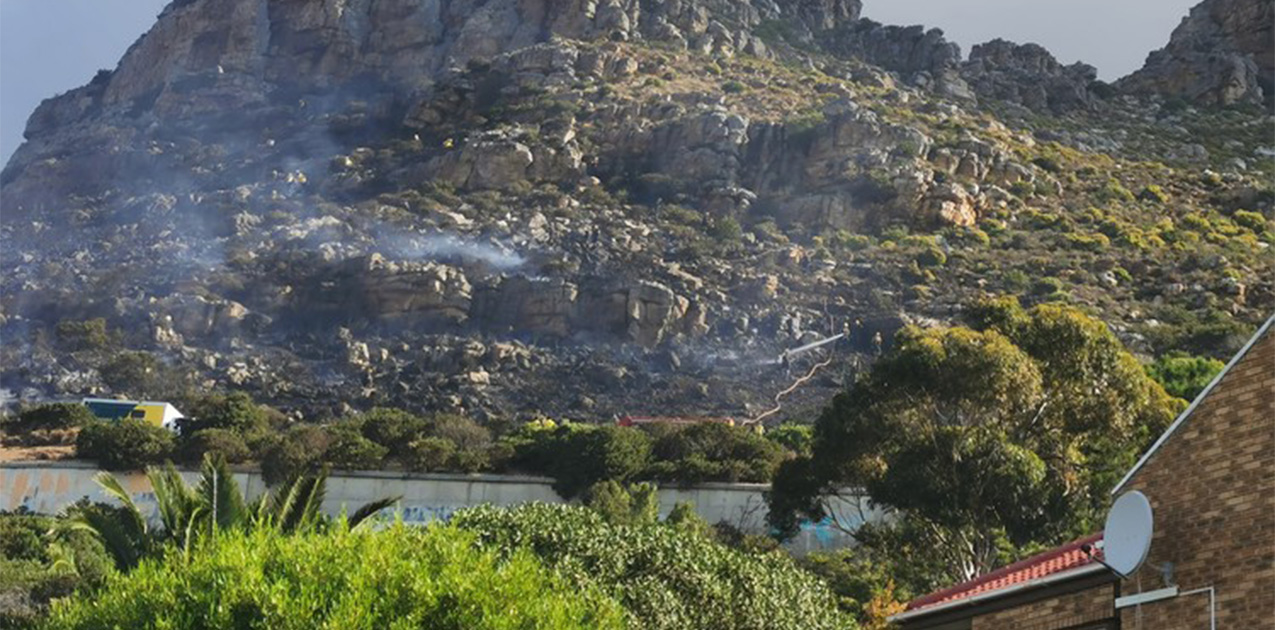
Climate change almost doubles the risk of wildfires in Cape Town, study shows
The ferocity of the fire on Devil’s Peak that gutted UCT’s Jagger Library in April 2021, causing an estimated R1-billion in damages to UCT alone, can be directly linked to climate change, state scientists from UCT and Coventry University in the UK. A study has found that climate change played a role in the “UCT […]

The ferocity of the fire on Devil’s Peak that gutted UCT’s Jagger Library in April 2021, causing an estimated R1-billion in damages to UCT alone, can be directly linked to climate change, state scientists from UCT and Coventry University in the UK.
- A study has found that climate change played a role in the “UCT fire” of 2021 and has significantly increased the chances of such devastating fires occurring in Cape Town.
- The Fire Weather Index prior to the 2021 UCT fire was the highest ever recorded in that area during autumn.
- The risk is set to keep increasing as global temperatures continue to rise.
Although arson is believed to have been the direct cause of the fire, it was the exceptionally hot and dry conditions, unusual for April, that led to the devastation. Embers carried by the wind lit dry vegetation ahead of the advancing fire line, with the combustible nature of alien vegetation in the area also being a contributing factor.
“The likelihood of the 2021-type event increased by a factor of 1.9 [nearly double] between 1880 and 2021 as a result of rising global temperatures”, the scientists say in their paper, The April 2021 Cape Town wildfire: has anthropogenic climate change altered the likelihood of extreme fire weather? published in the Bulletin of the American Meteorological Society on 1 January 2023.
Zhongwei Liu, Jonathan M. Eden, Bastien Dieppois, and Matthew Blackett from Coventry University, along with W. Stefaan Conradie from UCT, noted in their study “the exceptional nature of the meteorological conditions that coincided with the April 2021 event”.
Using data for the specific area of the fire dating back to 1880, they ran it through six established models. “The multi-model synthesis result suggests that the weighted average of the likelihood of the 2021-type event increased by a factor of 1.9 between 1880 and 2021 as a result of rising global temperatures.”
The data also showed that the Fire Weather Index, which combines temperature, wind speed, humidity, and precipitation to obtain a value, was 67.77 on 18 April 2021, the highest recorded during autumn in Cape Town.
According to the study, the humidity level was below 20%, the temperature rose to 33ºC, and although the day started off calm, the wind speed (a dry berg wind) rose to more than 40km per hour.
The Fire Weather Index was also generally above average during the 2020/21 summer period prior to the fire of 18 April.
The authors state the results complement other efforts to determine the link between climate change and extreme climatic events such as droughts, floods, and fires around Cape Town, such as a study of the 2015–17 drought that found climate change had “more than doubled the likelihood of a prolonged drought to occur”.
Acting head of the Stellenbosch University School for Climate Studies Professor Guy Midgley said the study was an “interesting analysis” and a “careful attribution”.
Midgley said the authors of the study make the point that an increasing population, which means there are more people on and around the mountain, increases the likelihood of fires being started, “but we are also seeing more big fires – out-of-control fires”.
He said there was a 30/30/30 rule, which related to temperatures of 30ºC or higher, the humidity of 30% or lower, and wind speeds of 30km per hour or higher. These factors, particularly in combination, led to runaway wildfires which were very difficult, if not impossible, to bring under control.
As the study noted, all these factors were in play on 18 April, and Midgley said the study showed that climate change had almost doubled the chances of such uncontrollable fires occurring.
With global temperatures continuing to rise due to human activity, such as the burning of fossil fuels, the likelihood of uncontrollable fires in and around Cape Town would only increase, he said.
He said Mediterranean climate zones, such as Cape Town and surrounds, were the rarest in the world, and the most threatened by the climate crisis.
He said the “most consistently predicted outcome” of a global increase in temperature was that the frontal systems that bring the winter rains that define the Cape’s Mediterranean climate, would shift southwards, leading to significantly lower rainfall over the Western Cape.
The drier and hotter conditions increased the risk and frequency of wildfires, as well as a risk to the water supply.
Paradoxically, severe flooding was also a risk, as occasional cut-off low-pressure systems would result in heavy rainfall over a short period “at odd times of the year” (as has been occuring in California).
City Fire and Rescue Service spokesperson Jermaine Carelse said ten years ago, in 2013, 7,784 bush, grass, and rubbish fires had been recorded. The figure for 2022 was 9,879, a 27% increase.
Disaster Risk Management Centre spokesperson Charlotte Powell said the City has a Climate Change Action Plan which identifies wildfires as a hazard.
Powell did not say how the plan intends to mitigate the occurrence and effect of such fires, saying only that the plan “includes actions” to be taken by “various City departments and directorates”.
On 16 January a fire broke out on Boyes Drive above Lakeside. The City swiftly dispatched several helicopters and numerous firefighters to the scene. The fire, which had the potential to burn a large swathe of the mountain range in Cape Town’s south peninsula, was swiftly put out with only a small area damaged. This may be the City’s strategy for preventing the kind of fire disaster that occurred in April 2021.
Published originally on GroundUp | By Steve Kretzmann
